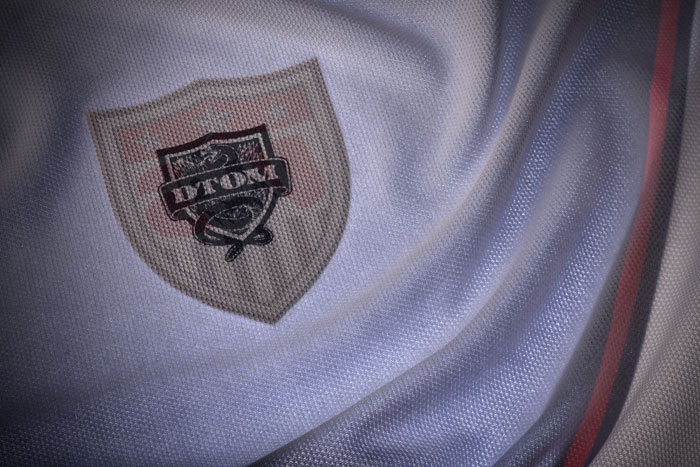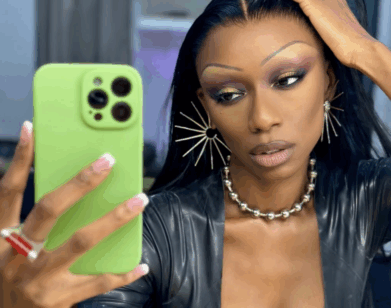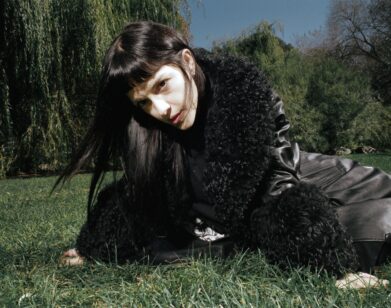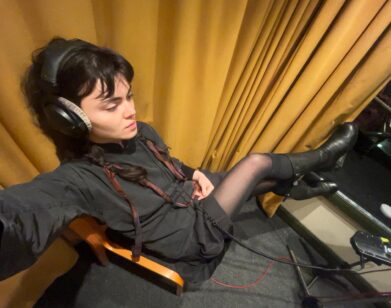World Cup 2010: What Does Your Crest Say About You?

ANDRE FOR FRANCE, FERNANDO CHAMARELLI FOR BRAZI
The core of soccer delirium has a lot to do with a national team’s performance, but apparently it also owes something to visual identity. Soccer “kits” (football for “uniform”) are updated every so often for both national teams and regional teams to keep ahead of the game. And the way an editor might rattle off the proportions of a Margiela’s 1998 Fall/Winter wool smock, the most seasoned soccer-kit fans could tell you the proper distribution of stripes on the shin guard socks used in England’s kit for the November 1960 match against Wales. What changes less frequently, however, is the respected team crest, which is often embroidered on the chest of a player’s jersey. Unlike the more corporate logos of American pro sports, the soccer crest is a palimpsest of sorts—a cluster of semiotic cues and iconographic references to a team’s past achievements, colloquial nicknames derived from fans, and its regional or national heritage. It’s all thrown together in a rich graphic history.
Ardent U.S.A. fans might notice that the their team’s shallow history has been mined for the 2010 Nike-designed kit, which features a bold stripe across the jersey and harkens to the kit worn in 1950 when they defeated England in a bitter upset. U.S.A.’s main crest sits above the heart and, since its redesign in 1995, looks disappointingly more like an automobile logo, with the letters US emblazoned in a blocky font on the upper register and three unimaginative stars atop a soccer ball rising above vertical background stripes. But this year, Nike has introduced a more inspiring secondary crest that lives, somewhat spiritually, on the inside of the jersey, on the reverse side of the main crest and features a black snake coiling a soccer ball with the letters “DTOM” which stand for, “Don’t Tread On Me,” the Revolutionary-era anti-British call to arms which has become a popular soccer rallying cry.
THEIR RESPECTIVE CRESTS
Umbro has commissioned unofficial crest redesigns of the seven national teams: France, Germany, Brazil, Uruguay, Italy, England and Argentina, which have collectively won the eighteen world championship titles since the World Cup’s 1930 inauguration. Umbro chose more street-sensible designers, art directors, contemporary artists and graffiti artists native to each country to create the designs, which are available for a limited time on the jerseys of each team. The most dynamic crests source each team’s heritage along with familiar national iconography. The world’s winningest team, Brazil, commissioned the former Wooster Collective street-artist Fernando Chamarelli to design their crest, which is, in fact, a stylized bird meant to reference their nickname, the “little canaries.” The local fans bestowed the name because of the team’s bright, iconic yellow shirts. Chamarelli also uses indigenous Brazilian patterns in the crest, further playing out the team’s colors. France gets a makeover from its Krylon-spraying playboy provocateur, André, whose energetic gestures and lines reference his graffiti art along with a nod to the Paris-Saint Germain regional soccer team crest, which features the Eiffel Tower.
Uruguay has won two world championships. Designer Martin Albornoz pays homage to its star 1950 player, “El Negro Jefe” (the Black Chief), by dousing the blue and white abstract shapes in the crest with black ink drops, and adding the words “El Maracanazo,” which is the name of Uruguay’s sweet victory and 1950 World Cup upset against Brazil in Rio de Janerio at the storied Maracana Stadium.
Myths are in the making in advance of the 2010 World Cup. South Africa is the first African nation to host the event, and here, superlatives are certain to add to each team’s legacy. As the popularity of team U.S.A. grows (they just hosted their largest-ever stadium audience in a friendly match against Turkey over Memorial Day weekend), one can anticipate more substance and more style.






